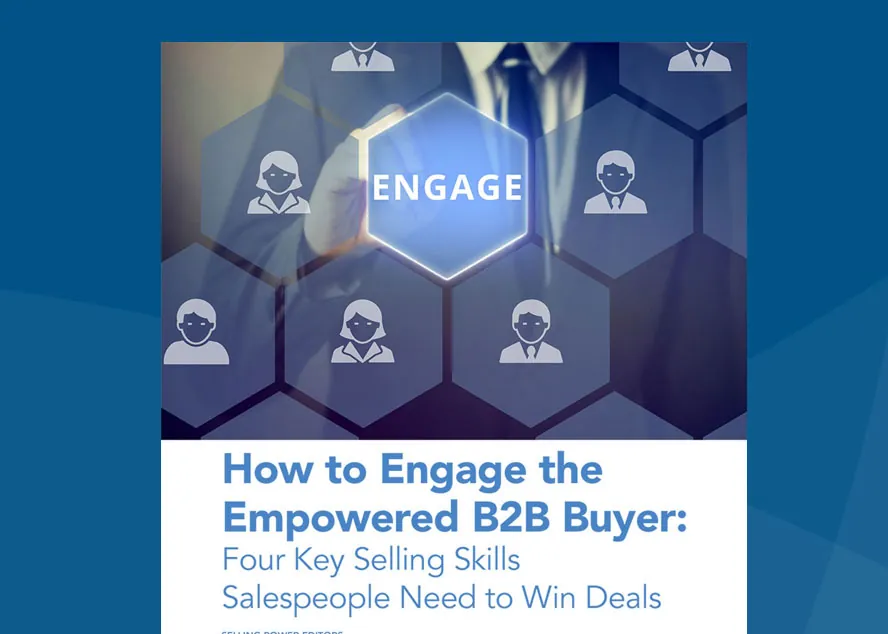Sales Techniques for Handling Apathy

What is an apathetic customer? Dictionary.com defines apathy as absence or suppression of passion, emotion, or excitement. What apathy is not, is an objection. Therefore, salespeople should quit treating it as such.
Here’s an example: We’ve all heard responses like, “I’m not interested,” or “I don’t need that,” or “I have something similar that works just fine.” These vague responses signal an apathetic customer or prospect; one who doesn’t give you much with which to work. In reality, he or she is just not engaged or prepared to consider what your company has to offer.
Unfortunately, many sales reps will hear one of these perceived blow-offs and immediately click into “overcoming objection” mode. They start selling the wonderful benefits of their product—not realizing that their fantastic sales spiel is falling on deaf ears. The reason for this reaction is that you and your prospect are not operating at the same stage of the sales process. You just leaped five steps ahead of your customer and even worse, may have just raised the prospect’s defense level in an already defensive dialogue.
The remedy? You guessed it. Create an awareness of needs. Let’s take a brief look at the steps to accomplish this.
Steps to Handling Apathy – Creating Awareness of Needs
1. Start with empathy.
Try to soften your approach so that you lower the prospect’s defenses with replies such as, “I understand you are very busy…” Exhibiting this sort of empathy encourages your prospect to be less confrontational and more open with you. Understanding their position and attempting to keep the dialogue flowing is your goal at this stage.
2. Earn the right to continue.
You must gain permission to move forward and to explore their need for what you have to offer. At this point you can begin gaining insight as to the prospect’s business and needs. Pique their interest with some of the benefits of continuing on in the conversation. Use a sentiment like, “We’ve worked with many companies like yours and have provided a strong return on investment with very little time needed. It certainly can’t hurt to spend just a few minutes speaking with me.” Remember, this is where you are letting the prospect know what’s in it for them to spend some time with you, even if they weren’t expecting to hear from you.
3. Assess the climate.
Once you earn the right to continue on in the dialogue, begin to ask probing questions to understand first how they operate, who they use, etc. Once you understand those points, ask questions to get an understanding of how well those operations are performing e.g. what’s good or what’s bad with their current product or situation. Make sure your questions are fact or need-based. It is imperative that you fully understand their current situation.
4. Confirm Needs.
As you are assessing the climate, you are naturally progressing into the identification of needs. Again, this isn’t the time to launch into your sales pitch. Think of this of this stage as a consultation, as if you are a doctor who is gathering patient information about symptoms, behavior, and past history. Ask them to tell you where it hurts. Once you can confirm their “pain points,” you can proceed with the next stage of the sales process, which is asking for the appointment to further identify solutions.
By using these steps with apathetic or uninterested customers, you will generate dialogue, create awareness of needs and ultimately generate more opportunities to sell your products and services. Instead of viewing the door as almost closed, view it as cracked open.

- Account Planning (11)
- Awards (49)
- Client Testimonial (37)
- Personal Branding (19)
- Podcast (11)
- Research (70)
- Sales Career Development (87)
- Sales Coaching (156)
- Sales Consulting (137)
- Sales Culture (170)
- Sales Enablement (354)
- Sales Leadership (109)
- Sales Management (248)
- Sales Negotiation (16)
- Sales Prospecting (125)
- Sales Role-Playing (18)
- Sales Training (235)
- Selling Strategies (263)
- Soft Skills (70)
- Talent Management (94)
- Trusted Advisor (27)
- Virtual Selling (49)
- Webinar (9)


























